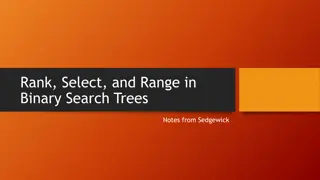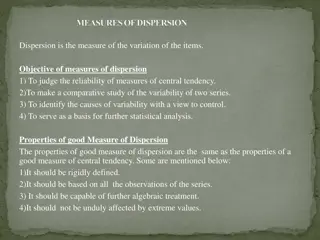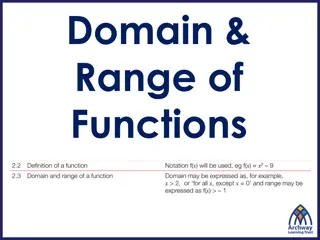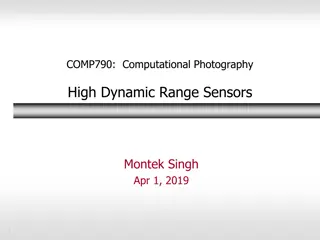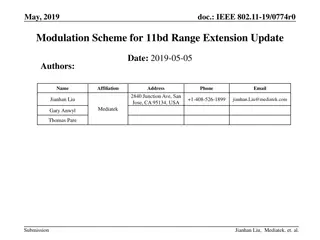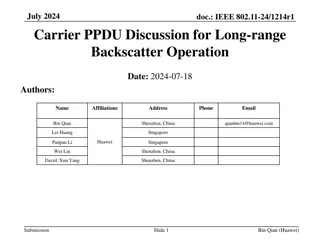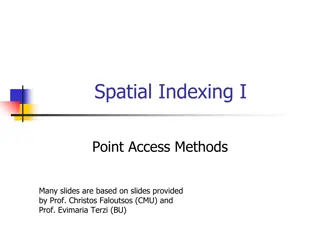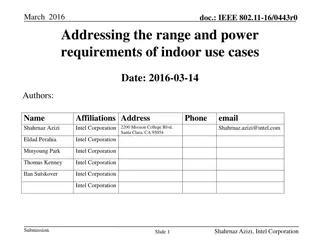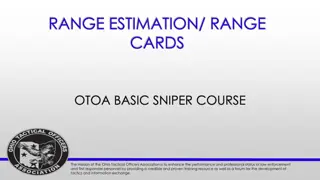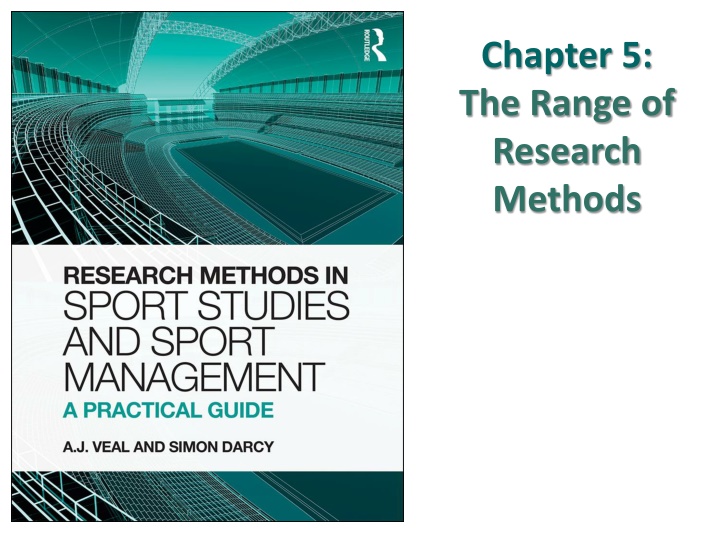
Exploring Research Methods in Sport Studies and Management
Dive into the diverse range of research methods available for scholars, from qualitative methods like in-depth interviews and focus groups to data analysis and participant observation. Discover how researchers can creatively explore and evaluate existing literature, data sources, and behaviors to enhance scholarly understanding in the field of sport studies and management.
Download Presentation

Please find below an Image/Link to download the presentation.
The content on the website is provided AS IS for your information and personal use only. It may not be sold, licensed, or shared on other websites without obtaining consent from the author. If you encounter any issues during the download, it is possible that the publisher has removed the file from their server.
You are allowed to download the files provided on this website for personal or commercial use, subject to the condition that they are used lawfully. All files are the property of their respective owners.
The content on the website is provided AS IS for your information and personal use only. It may not be sold, licensed, or shared on other websites without obtaining consent from the author.
E N D
Presentation Transcript
Chapter 5: The Range of Research Methods
The Range (Fig. 5.1) Method Scholarship Brief description Well-read, thinking deeply and creatively about a topic Thinking part of scholarship. Identifying, summarising, evaluating the research literature. Re-use of data originally collected by others for other purposes. Direct looking at behaviour or cameras. Data in the form of words (images, sounds) Just thinking Existing sources 1: using the literature/ systematic reviews Existing sources 2: secondary data Observation Qualitative methods Questionnaire-based surveys Use of formal, printed list of questions: main quant. method in leisure/tourism research. Experimental method The researcher controls the environment Case study Focus is on one or a small number of cases A. J. Veal & S. Darcy (2014) Research Methods for Sport Studies and Sport Management: A practical guide. London: Routledge
Qualitative methods (Fig. 5.2) Data collection method In-depth interviews One-on-one, lengthy interview, checklist rather than questionnaire Focus groups Discussions with groups of people (typically 6-12) led by a facilitator A. J. Veal & S. Darcy (2014) Research Methods for Sport Studies and Sport Management: A practical guide. London: Routledge
Qualitative methods contd Data collection method In-depth interviews One-on-one, lengthy interview, checklist rather than questionnaire Focus groups Discussions with groups of people (typically 6-12) led by a facilitator. Examined by the naked eye or use of camera. Researcher as participant Observation Participant observation A. J. Veal & S. Darcy (2014) Research Methods for Sport Studies and Sport Management: A practical guide. London: Routledge
Qualitative methods contd Data collection method In-depth interviews One-on-one, lengthy interview, checklist rather than questionnaire Focus groups Discussions with groups of people (typically 6-12) led by a facilitator Examined by the naked eye or use of camera. Researcher as participant Subjects are invited to provide their own accounts Analysis of published or unpublished texts (incl. Images, TV, film, music, radio) Observation Participant observation Biographical methods Analysis of texts A. J. Veal & S. Darcy (2014) Research Methods for Sport Studies and Sport Management: A practical guide. London: Routledge
Qualitative methods contd Data collection method In-depth interviews One-on-one, lengthy interview, checklist rather than questionnaire Focus groups Discussions with groups of people (typically 6-12) led by a facilitator Examined by the naked eye or use of camera. Researcher as participant Subjects are invited to provide their own accounts Analysis of published or unpublished texts (incl. Images, TV, film, music, radio) Studying groups of people using a mixture of methods Ethnographic research based on internet activity Observation Participant observation Biographical methods Analysis of texts Ethnography Netnography A. J. Veal & S. Darcy (2014) Research Methods for Sport Studies and Sport Management: A practical guide. London: Routledge
Questionnaire-based surveys Two forms: interview format: interviewer reads out questions from questionnaire respondent-completion format respondent reads and completes the questionnaire NB: Interviews can be: questionnaire-based or in-depth/informal, check-list-based (see qual. above) A. J. Veal & S. Darcy (2014) Research Methods for Sport Studies and Sport Management: A practical guide. London: Routledge
Types of questionnaire-based survey (Fig. 5.3) Type Household survey Street survey Alternative name Community survey or social survey Quota survey or intercept survey A. J. Veal & S. Darcy (2014) Research Methods for Sport Studies and Sport Management: A practical guide. London: Routledge
Types of questionnaire-based survey (Contd) Type Household survey Street survey Telephone survey On-line survey Mail survey Alternative name Community survey or social survey Quota survey or intercept survey - Web-based survey Postal survey A. J. Veal & S. Darcy (2014) Research Methods for Sport Studies and Sport Management: A practical guide. London: Routledge
Types of questionnaire-based survey (Fig. 5.3) Type Household survey Street survey Telephone survey On-line survey Mail survey Site or user survey Alternative name Community survey or social survey Quota survey or intercept survey - Web-based survey Postal survey Visitor survey, customer survey, intercept survey - Captive group survey A. J. Veal & S. Darcy (2014) Research Methods for Sport Studies and Sport Management: A practical guide. London: Routledge
Subsidiary/cross-cutting techniques (Fig. 5.4) Technique Action research Brief description Research committed to social outcomes, typically involving collaboration with a client organisation A process for studying people's choice processes by asking people to express preferences for hypothetical products with different combinations of attributes. Quantitative study of printed/written documents or static/moving images (see also qualitative methods). Analysis of returns from 'special offer', 'two for the price of one' etc. vouchers/ advertisements Conjoint analysis Content analysis Coupon surveys/ conversion studies Delphi technique studies Process in which a sample of experts responds to questions about future events in repeated rounds ideally to achieve us En route/intercept/ cordon surveys Survey conducted with visitors entering, leaving or travelling to or from a site/destination
Subsidiary/cross-cutting contd Technique Epidemiology Brief description The study of geographical distributions of variables (e.g. health status) among the population. Subjects are contacted by mobile phone several times a day to record activities/feelings etc. as they go about day-to-day activities. Research on past events. Experience sampling method (ESM) Historical research Longitudinal studies The same sample of subjects are repeatedly surveyed typically over a number of years. Media report on surveys in which readers/listeners take part, typically on-line or via auto-phone-in. Media reader/viewer/ listener surveys Examination/summary of many studies on one topic, typically with a key outcome measure such as a correlation coefficient. Meta-analysis A. J. Veal & S. Darcy (2014) Research Methods for Sport Studies and Sport Management: A practical guide. London: Routledge
Subsidiary/cross-cutting contd Technique Network analysis Brief description Study of links between individuals and/or organisations involved in an activity (graphical/mathematical) A sample of individuals recruited to a 'panel' who may take part in several surveys over a period of time. Panel studies Perceptual mapping Subjects provide graphic representation of components of a problem/issue, typically collaborative. Projective techniques Psychographic/ lifestyle studies Subjects respond to hypothetical scenarios. Data on a wide range of attitudes, values and socio- demographics analysed to determine distinctive psychographic/lifestyle groups/market segments. A. J. Veal & S. Darcy (2014) Research Methods for Sport Studies and Sport Management: A practical guide. London: Routledge
Psychographic/lifestyle categories (Fig. 5.7) VALS 1. Survivor 2. Sustainer 3. Belonger 4. Emulator 5. Achiever 6. I-Am-Me 7. Experiential 8. Socially conscious 9. Integrated A. J. Veal & S. Darcy (2014) Research Methods for Sport Studies and Sport Management: A practical guide. London: Routledge
Psychographics: ACORN 1. Wealth achievers 4. Moderate means A. Wealthy Executives K. Asian communities B. Affluent greys L. Post-industrial families C. Flourishing 2. Urban prosperity M. Blue-collar roots 5. Hard-pressed D. Prosperous professionals N. Struggling families E. Educated urbanites O. Burdened singles F. Aspiring singles 3. Comfortably off P. High-rise hardship Q. Inner city adversity G. Starting out H. Secure families I. Settled suburbia J. Prudent pensioners
Subsidiary/cross-cutting contd Technique Brief description Process in which subjects rank scale items (as above) depicted on cards. Quantitative method in which relationships between two or more variables are assessed statistically. Q methodology Quantitative modelling Repertory grid Pairs of contrasting descriptors elicited from respondents to form constructs; scores on constructs are analysed to form a perceptual picture. Friendly Threatening Cool Uncool A. J. Veal & S. Darcy (2014) Research Methods for Sport Studies and Sport Management: A practical guide. London: Routledge
Subsidiary/cross-cutting contd Batteries of 'stimulus items' (responded to via Likert-type scales. Survey in which respondents complete a detailed 1-2-day diary of activities. Web-based research Research on,or using, the internet see also 'netnography' under qualitative methods above. Use of scales Time-use surveys Multiple methods Triangulation Two or more methods focus on the same phenomen- on, providing confirmation or differing insights. Management task: various research approaches, needed in situations where usage/visitor numbers are not available from ticket sales. Counting heads A. J. Veal & S. Darcy (2014) Research Methods for Sport Studies and Sport Management: A practical guide. London: Routledge
Choosing methods Considerations (Fig. 5.11) 1. The research question or hypothesis 2. Previous research 3. Data availability/access 4. Resources 5. Time 6. Validity, reliability, trustworthiness 7. Generalisability 8. Ethics 9. Uses/users of the findings A. J. Veal & S. Darcy (2014) Research Methods for Sport Studies and Sport Management: A practical guide. London: Routledge


![Long-Range Wireless Charging Market Report & Analysis _ BIS Research [2024-2035]](/thumb/87166/long-range-wireless-charging-market-report-analysis-bis-research-2024-2035.jpg)
